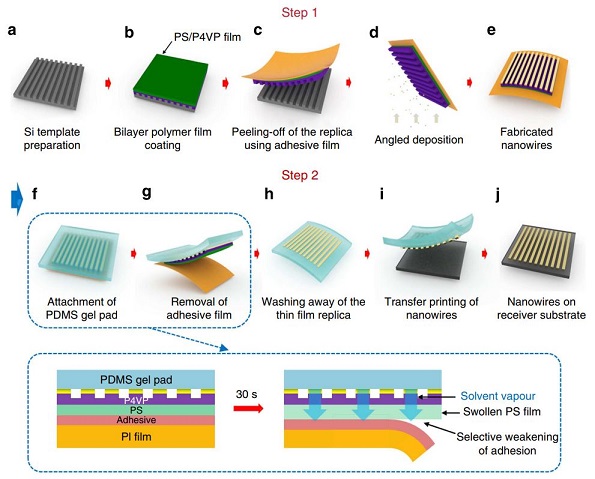Nanotransfer printing (nTP) technology offers outstanding simplicity and throughput in the fabrication of transistors, metamaterials, epidermal sensors, and other emerging devices. Nevertheless, the development of a large-area sub-50 nm nTP process has been hindered by fundamental reliability issues in the replication of high-resolution templates and in the release of generated nanostructures. Our group presented a solvent-assisted nanotransfer printing (S-nTP) technique based on high-fidelity replication of ultrahigh-resolution (8 – 20 nm scale) patterns using a dual-functional bilayer polymer thin film. For uniform and fast release of nanostructures on diverse receiver surfaces, interface-specific adhesion control was realized by employing a polydimethylsiloxane (PDMS) gel pad as a solvent-emitting transfer medium, providing unusual printing capability even on biological surfaces such as human skin and fruit peels.

Nanotransfer-printing technique
Further reading
“High-resolution nanotransfer printing applicable to diverse surfaces via interface-targeted adhesion switching” Nature Communications, 2014, 5, 5387 Jae Won Jeong, Se Ryeun Yang, Yoon Hyung Hur, Seong Wan Kim, Kwang Min Baek, Soonmin Yim, Hyun-Ik Jang, Jae Hong Park, Seung Yong Lee, Chong-Ook Park, and Yeon Sik Jung* [Link]
